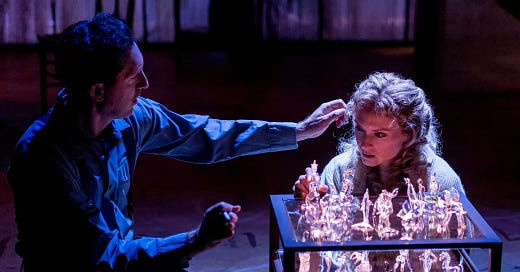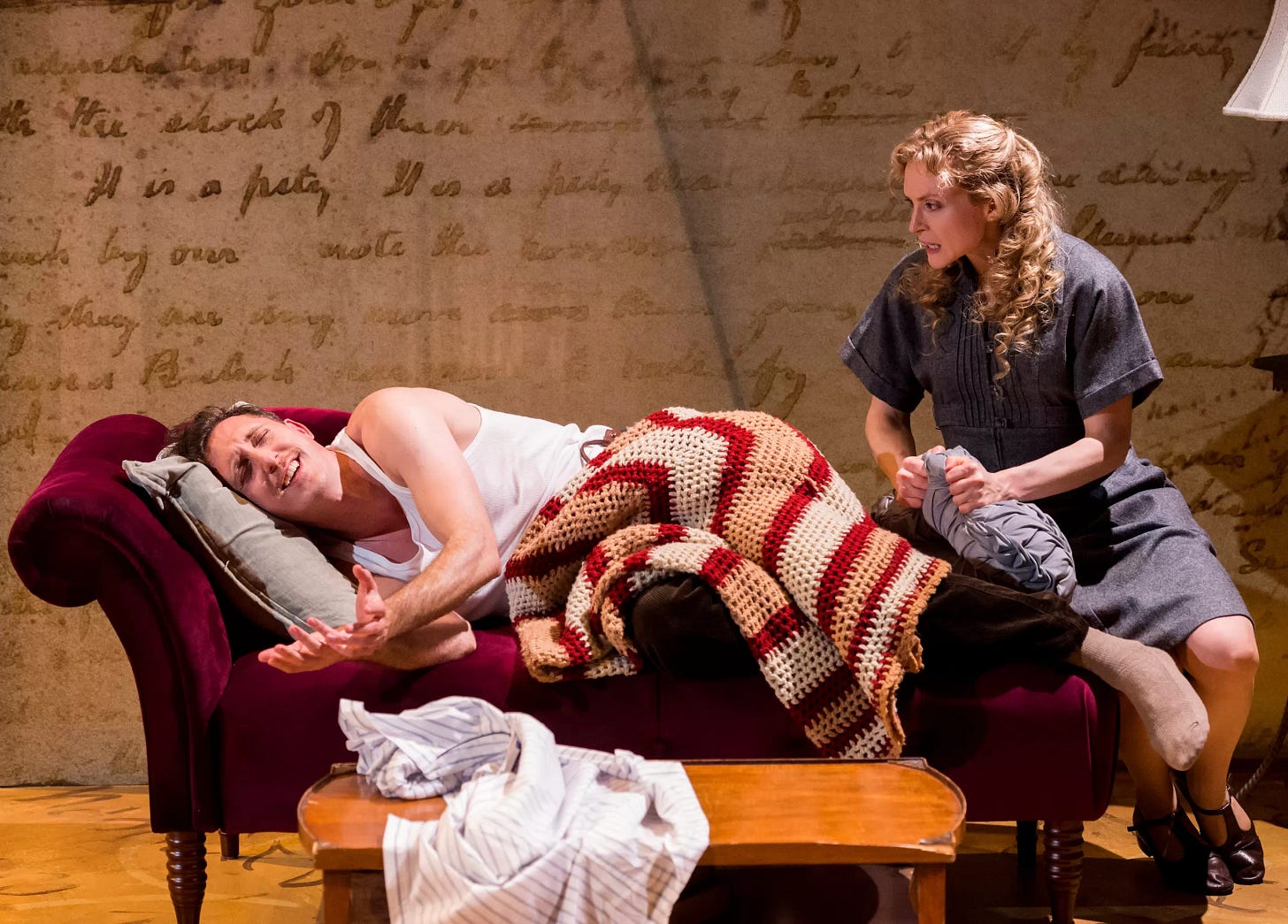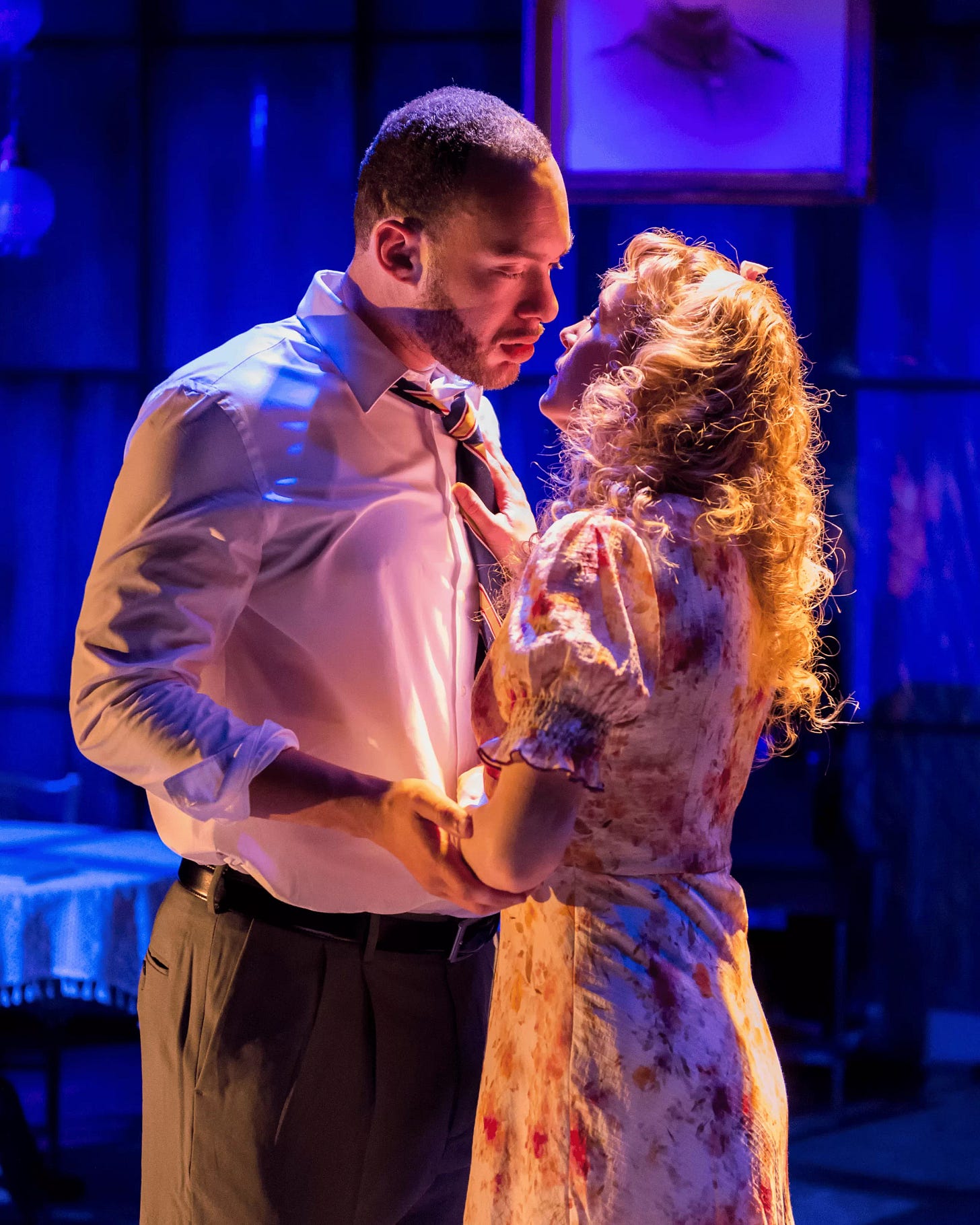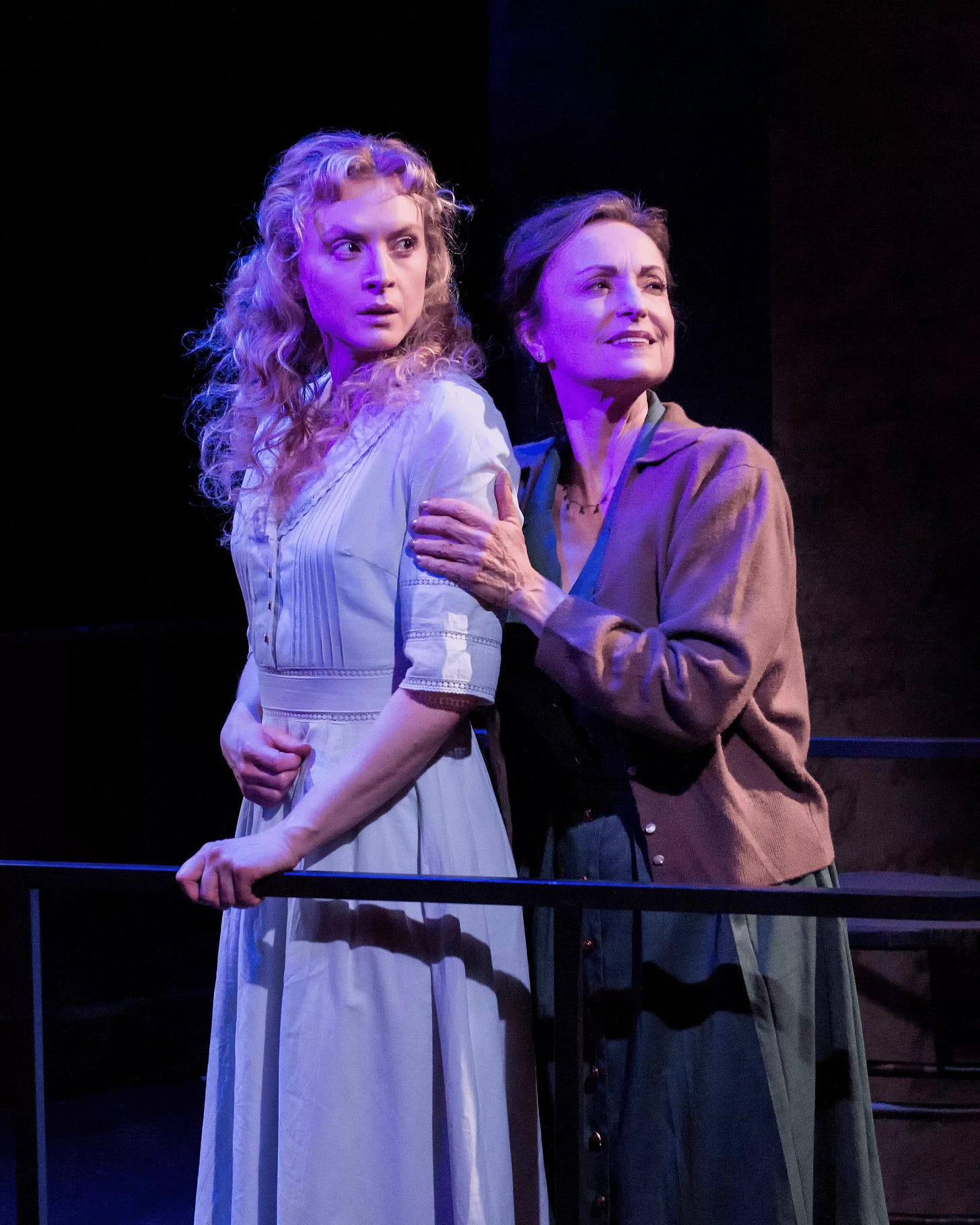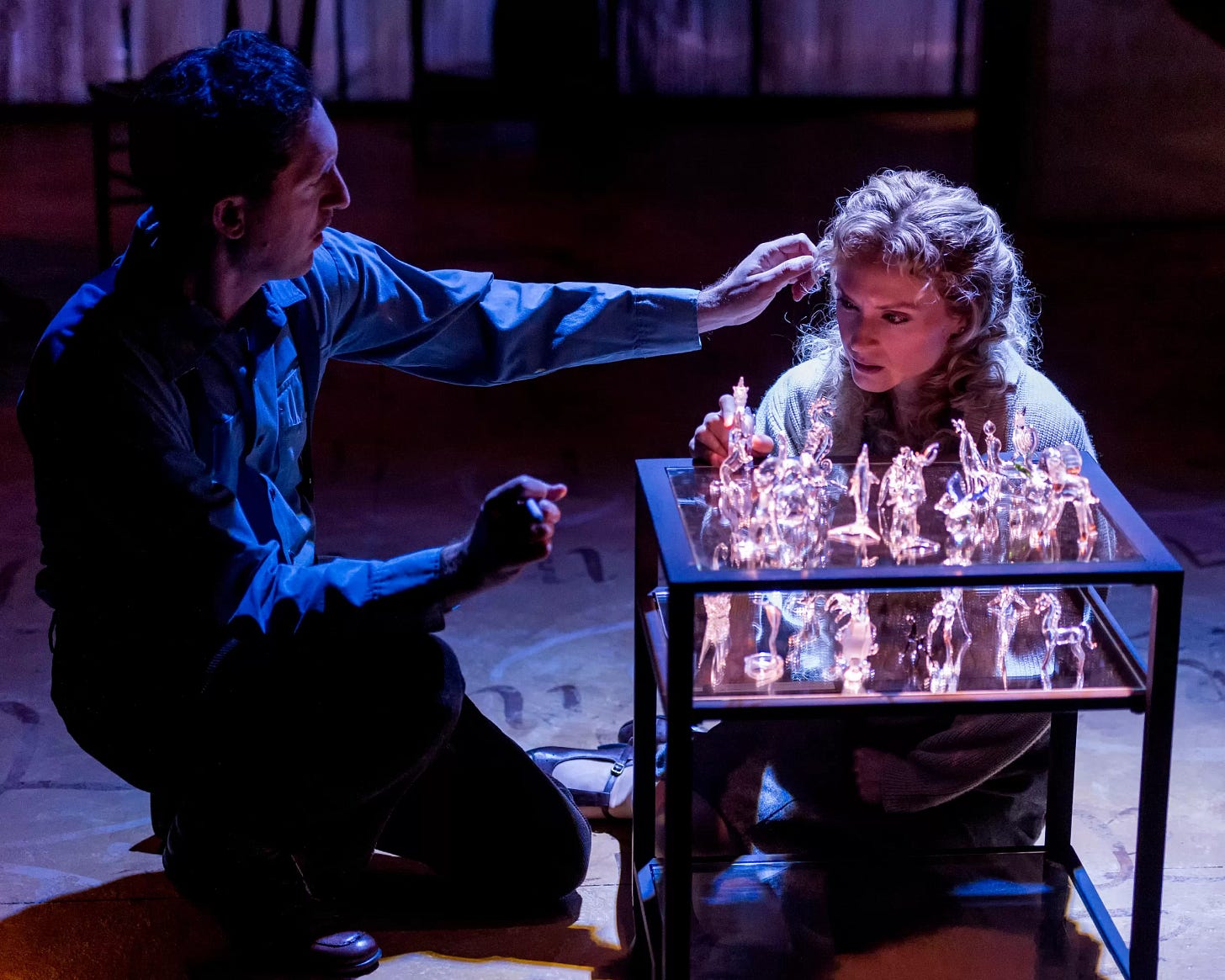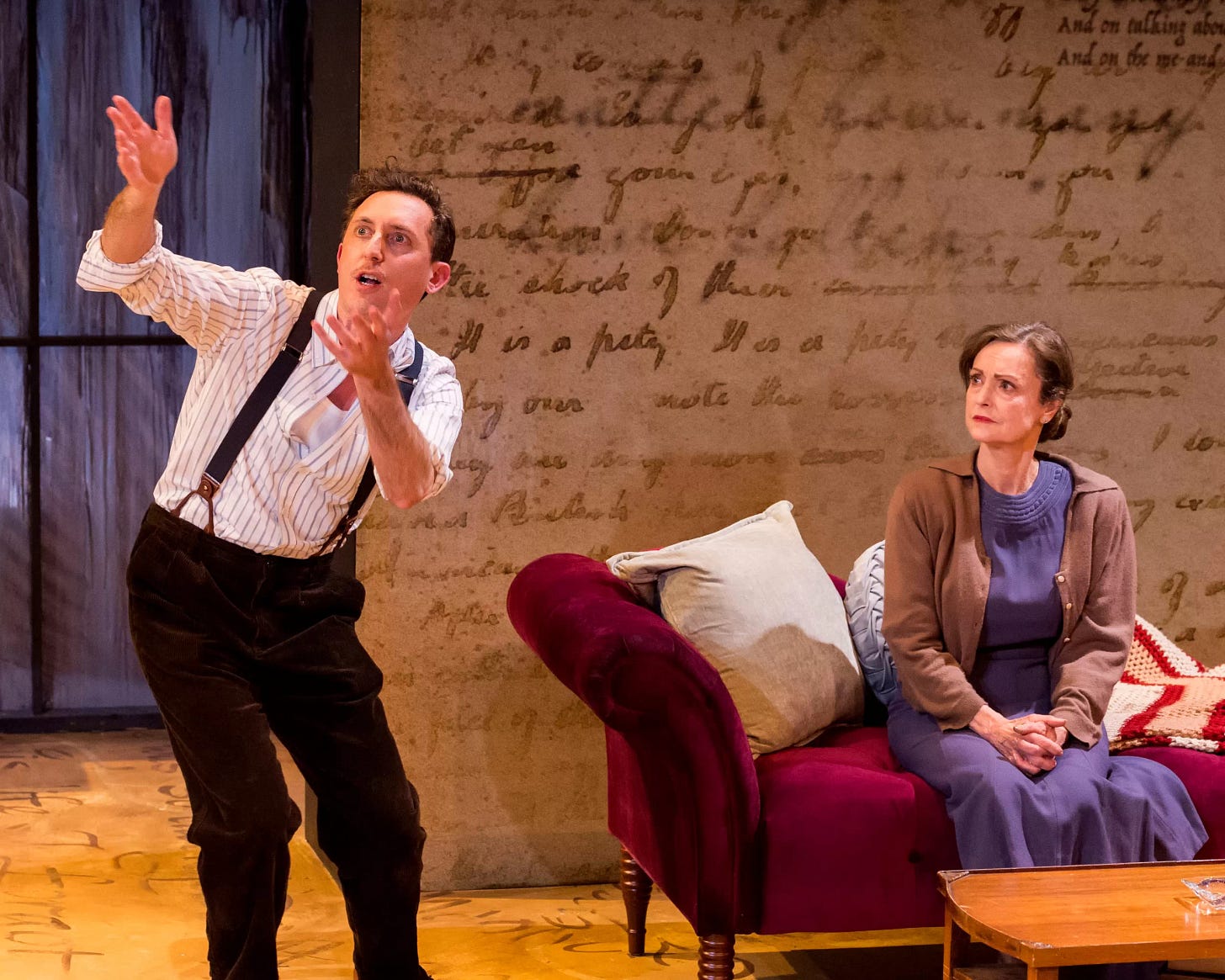Antaeus Theatre Company’s revival of The Glass Menagerie transports us to a St. Louis apartment so vivid you can almost smell the dusty phonograph needles. Director Carolyn Ratteray surrounds Tennessee Williams’s memory play with lovingly period detail, then lets her quartet of actors ricochet through its cramped emotional corridors.
A stroke of visual genius greets us before the first line is spoken: the dingy walls and even sections of the floor are mottled with hasty pencil scrawls—half-legible dates, snatches of poetry, fragments of warehouse schedules. It’s as though Tom’s private notebook has bled out and papered every surface. Because Williams tells us outright that this is a “memory play,” the set implies that the very architecture is constructed from Tom’s recollections. Those scribbles, illuminated by moody sidelight, remind us that every scene is filtered through a writer’s restless mind. Scenic designer Edward E. Haynes Jr. deserves a bow for turning the apartment itself into a living journal page; it grounds each emotional eruption in the ink-blotted subjectivity of remembered time.
Gigi Bermingham’s Amanda Wingfield is a force of nature—equal parts magnolia blossom and Category 5 hurricane. Bermingham leans unapologetically into Amanda’s theatricality; every recollection of “seventeen gentlemen callers” unfurls like an operatic aria. In 2025, an era of throwaway texts and quick-hit memes, such unabashed expressiveness can feel oversized, and Friday’s audience kept grasping for nervous chuckles simply to release the pressure. Yet Bermingham’s commitment reminds us that in the 1930s, conversation itself was entertainment: no streaming queue, no infinite scroll, just the radio, the Victrola, and the human voice .
Emily Goss gives Laura a tremulous inner glow. Her delicacy never drifts into treacle; she shows us a young woman who speaks fluent silence, communicating more with a half-smile over her glass unicorn than many modern characters manage with pages of dialogue . When Alex Barlas’s genial Jim O’Connor finally arrives, Goss lets hope and dread ripple across Laura’s face like moonlight over pond water—a fleeting reminder that in Williams’s universe, salvation always comes with a price tag.
Then there’s Josh Odsess-Rubin as Tom. From the first cigarette-snap he hints at a subtle effeminacy—just a sliver of a softer wrist, a lingering vowel—that feels less mannered than confessional. It’s a discreet nod to the playwright’s own biography, a whispered “I see you” offered across eight decades . The choice never lapses into caricature; instead, it deepens the ache of a poet trapped in a warehouse job, yearning for a world that will allow both his wanderlust and his truth.
What the production captures best is how words once filled the vacuum now occupied by push notifications. In the Wingfield flat, talk isn’t filler; it’s currency, seduction, and artillery. Today’s audiences, schooled in micro-gestures and cinematic realism, sometimes bridle at the unabashed drama—witness the titters that bubbled up whenever Amanda’s monologues crested—but that friction is precisely the point. Watching this play in 2025 is like peering through a time-warped mirror: the themes of loneliness and abandonment still resonate, but the echoes bounce differently off our Wi-Fi walls.
Mounting a mid-century American classic in a digital age requires no small measure of artistic courage. Antaeus meets the challenge head-on, inviting us to unplug for two hours and eavesdrop on a family whose heartbreak predates our own by a hundred years yet feels disconcertingly familiar. The Glass Menagerie may not be Williams’s definitive masterpiece—save that crown for a certain storm-lashed hotel in Night of the Iguana—but this brave, beautifully rendered production proves why we keep returning to his cabinet of fragile dreams.

